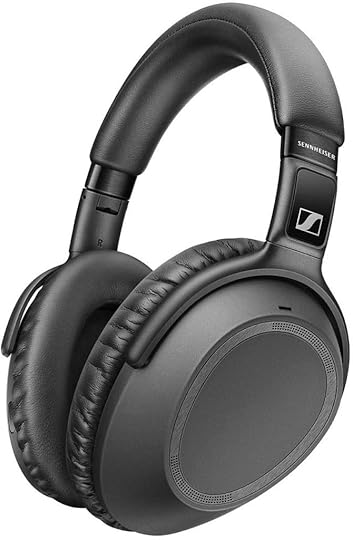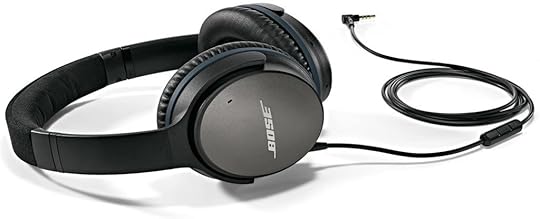Mohit Tater's Blog, page 482
August 6, 2020
5 Things To Include In Your Online Employee Handbook
When it comes time to creating your employee handbook, it is critical to add all the necessary information needed for a newbie to join you!
The question however is, what do you actually need to put in your handbook in the first place? No matter what space your company is in, there are a number of employee handbook essentials to include across the board.
Here we’re looking at 5 things you must include in your online employee handbook.

1. Onboarding Section
When people are newly hired at your company, there are many new rules and policies they need to think about. However, there are also many legal things they need to be made aware of so they know where they stand with different company matters.
This is where your onboarding section comes in!
After years of working creating handbooks for multiple clients, the expert team at AirMason says that on-boarding is by far the most important section in the handbook. The onboarding section contains information about equal opportunity statements, conflict of interest statements, company culture statements, and lots more legalese that your new hire should familiarize themselves with.
2. Office Procedures
Your new hire needs to get the lowdown on their new office environment, how it works, and how they can fit their working style into the constraints of the work environment.
Ideally, your office procedures section should include details like office hours, lunch times, smoking break policies, work-from-home policies, rules about the use of company equipment, and any ADA accommodations made for employees with disabilities.
No one wants to make a fool of themselves in the office because they don’t know the rules, so make sure that your employees understand the workplace they’re walking into.
3. Compensation Details
We can talk about goals and career aspirations till the cows come home, but ultimately, your employees all want to get paid. Asking about your payment can feel awkward, whether you’re talking to co-workers or superiors, so it’s helpful to have an in-depth compensation section in your employee handbook.
Include details about their salary, the dates they can expect payment, tax details, and more. If your employees are able to work overtime, explain your overtime policy and what the rate of pay for overtime hours is. If you offer bonuses at certain times of the year, explain that too.
There are many ways to create an employee handbook, but you should always have an in-depth compensation section regardless of the style you choose.
4. Paid Vacations
Everyone needs time off. Whether it’s for a vacation, a family event, an emergency, or some much-needed rest.
Paid vacations is another topic that feels awkward for employees to discuss with their superiors, so make sure to include plenty of information in your handbook.
Include details about how much time your employees can take as paid leave every year, the process for booking time off from work, and details for payments during this time. For example, if your rate of pay differs when people take time off work, make note of that.
Your employees should easily grasp how to book time off, how much time off they’re allowed to take, and how much they’ll get paid during their time away.
5. Benefits
All employees enjoy benefits and recognition! If your company has certain benefits, you need a benefits section which details all of these things separately.
For example, if you offer health insurance or dental coverage, include full details on how employees can sign up for this coverage and reap the benefits of your healthcare plan.
Similarly, if your company offers a pension fund or a 401(k), talk about how this works and how employees can monitor their retirement fund.
If your company offers company vehicles for any reason, state how using the company vehicle works. Can employees use it for personal errands when not working? How do they keep track of the fuel expenditure? Is there an expenses system of any kind?
Finally, list any additional benefits you might give your employees. For example, some food companies allow their employees to eat free lunches and some retailers give employees exclusive store discounts.
Hopefully you enjoyed these 5 things to include in your online employee handbook! Whether you’re a small retailer or a huge international conglomerate, including these sections in your HR book is a surefire path to employee success and happiness!
The post 5 Things To Include In Your Online Employee Handbook appeared first on Entrepreneurship Life.

How to Get Better Results From Your Employees
Your employees are integral to your success. They help your business grow, they provide necessary assistance, and their intuitive ideas can open new paths for future progress. However, getting the desired results out of your employees can sometimes feel like a hassle. Low morale, lack of motivation, and outdated toolkits can all impact productivity and efficiency.
Luckily, there are a few things you can do to align strategic priorities, achieve action items, and boost productivity. All you need are some useful resources and teaching tools.

Use goal-setting software
Part of keeping employees accountable revolves around monitoring goal progress. While you likely have a set of company priorities, you need to facilitate individual goals as well. It’s a useful way to ensure your employees feel as though they have a stake in your business. An effective way to do this is through the OKR methodology. OKRs—objectives and key results—are incredibly helpful for setting goals, assessing strategic priorities, and tracking metrics. If you’re unfamiliar with how OKRs work, you can always rely on the aid of a software solution, much like the ones offered by Workboard.
Workboard develops OKR software that can help you monitor key results, set action items, and rethink your company’s priorities. The goal of the Workboard support team is to ensure that your company priorities remain in alignment throughout each workday. The Workboard platform ticks off every box when it comes to key results, business plots, and even individual plots for growth. Startups and established companies alike can benefit from incorporating objectives and key results in their overall business model. Plus, setting up a Workboard account is easy and intuitive so you won’t feel like you’re facing a steep learning curve.
Invest in continued learning
If your employees are passionate about topics that could benefit your business, find ways to facilitate their education. Say you have an employee that’s interested in coding and wants to learn Python. They’ve set up a free GitHub account but are having a difficult time following the forums and understanding concepts like “import matplotlib.pyplot,” and “returned figure object.” Why not pay for a Python class for them? They can learn about plt.subplots, axes objects, basic plots, maintainers, np, 2d arrays, and how a tuple works. Then, your employee can apply all of that newfound knowledge to your business’s growth and development.
Ongoing growth is incredibly important to many employees. Too commonly, an employee starts to feel stagnant in their role which can drastically impact productivity and output. By providing for education, you’re giving your employee something to work towards.
Incentivize performance
Everyone loves perks and rewards. They help drive employee performance and improve productivity. By incorporating incentives into your workday ventures, you can push your employees to work harder and smarter. Why not consider providing wi-fi to employees? If they hit certain goals or markers throughout the month, give them a choice between providers like Comcast and Cisco. It doesn’t add up to a major expense for you and is a sign of goodwill towards your employees. Of course, you can provide other incentives like phone plans, in-office perks, and more that can help your employees feel excited about every day at work.
While incentives don’t have to be one of your company’s priorities, they can make a real difference around the workplace.
No matter what you choose, it’s important that it feels beneficial to your business and less like employees are being punished. You want to boost morale and encourage professional growth, not stifle it. By investing more in your employees and their development, you’re much more likely to see major returns.
The post How to Get Better Results From Your Employees appeared first on Entrepreneurship Life.

August 5, 2020
How Paula Wallace Created a Wonderland Called SCAD
Most U.S. universities feel as old as the nation itself, with histories stretching back a century or more, when most students studied Latin and Greek and academic career paths pointed towards law, religion, medicine, and not much else. Almost all of these older institutions feature a hall somewhere–usually the main administrative building–featuring large portraits and photographs of past university presidents, rows and walls of austere faces of men staring back across the centuries and decades. How rare, then, to meet the President of SCAD Paula Wallace, her smile anything but austere, a thriving university she founded, not in the distant past, but some 40 years ago. In a mere four decades, Wallace has elevated SCAD among the elite creative universities on the planet.

How did she do it?
It all began, like stories do, long before SCAD, when she fell in love with creative expression as a girl of six, learning to play the piano. By age 12, she began teaching piano lessons to other school children around her neighborhood. “I loved teaching from the very first,” Wallace said. “I knew that whatever I did with my life would involve education.”
After studying music and elementary education at a small liberal arts college in South Carolina, Wallace jumped right into the classroom, returning to her hometown of Atlanta, Georgia, in 1970 teaching second grade, while working on a master’s degree at night and on weekends. “My classroom was a lab,” Wallace said. “Everything I learned, I tested.”
She was most fascinated with using creativity to teach all subjects, where her piano became a teaching tool. “I had one in my classroom!” she said, even though she technically didn’t teach music. She’d write songs about history, grammar. “The students really came alive when I made it fun,” she said. Soon, she had them writing songs and skits and poems and performing, drawing, dancing. “Everything,” she said, “is more approachable with art.”
A few years into her teaching career, Wallace decided to make a change, taking her ideas from primary school and applying them to higher education.
“I’d never taught at the university level,” Wallace said, “but I thought of my own college education, and frankly how dull and dreary it was.” Why couldn’t she apply her elementary classroom tactics to enlivening the college classroom, too? Every great entrepreneur and inventor has a moment where they ask a Big Question nobody else is asking, and this was Wallace’s.
The stars aligned to make this hope a reality. Wallace’s mother, May Poetter, had recently written an English literature textbook for Houghton-Mifflin that sold very well, and her parents determined to support their daughter’s dream by donating the royalties from the book to the new college Wallace had begun planning.
The work began in earnest in summer 1978, when Wallace and her family selected Savannah, Georgia, as the place to start. “This city was and remains gorgeous and steeped in history and character,” she said. “It had everything our students wanted and needed: small-town charm, great architecture, expansive natural beauty, public parks and squares, a nearby beach, and so many gorgeous but sadly empty buildings.”
SCAD was incorporated in fall 1978, with plans to offer classes a year later. The next year was devoted to finding a suitable building (the historic Savannah Volunteer Guards Armory), creating a faculty and staff (including her husband and her parents, whom she cajoled out of retirement to help), and creating curriculum and a course catalog for recruitment and, eventually, instruction. Wallace built a substantial network of educators from across the U.S. who came to SCAD in 1978-79 to help write the curriculum and prepare the building. Ceramics, historic preservation, graphic design, painting, interior design, printmaking, photography, and textile design were the first majors.
She and her team began recruitment, too, traveling to high schools across the Southeast, from Florida to Virginia to Texas. “The hardest part of the whole enterprise,” Wallace said, “was going from zero students to one.”
Throughout spring and summer, SCAD recruited 71 students and a small but expert faculty to teach them, and its doors officially opened in September 1979. The rest is history.
“And nothing has been easy,” she said. “To do anything well requires research and devotion and kindness and work, work, work.” Her mother, she says, had a saying: “We only work half days at SCAD, sunup to sundown.”
In the decades since its doors first opened, SCAD has risen from a small, experimental art school of 71 students into a preeminent powerhouse of creative education with more than 14,000 students and three campuses, largely due to a few secret (or not-so-secret) ingredients.
“If I had to boil it down, I’d say we have three special qualities that differentiate SCAD among other universities,” Wallace said.
First, the SCAD mission is to prepare students for professional careers. “Our explicit focus on career preparation is rare among arts universities,” she said. Wallace says that this focus on careers drives everything at SCAD: who they hire (those with real industry experience) and what they teach (knowledge so that students will be “ready on day one” of the job). The success of SCADpro, the university’s research consultancy where students partner with companies on actual real-world design projects, is one example of this career focus.
Second, she says, it’s all about the beauty and design of SCAD buildings within the urban context of a beautifully designed city. “You come visit SCAD and you fall in love. It can’t be helped. The art, the architecture, the Spanish moss. It makes you swoon. Students can see themselves living and loving it here. Our Atlanta campus, which opened in 2005, creates a similar feeling in students.” says Paula Wallace about SCAD.
And third? “SCAD is full of kind people!” Wallace said, explaining that the university’s origins in the South and a desire to create a warm, hospitable environment have suffused every aspect of operations, how professors teach and how students engage with the community.
Some forty years later, it seems to be working. Learn more about Paula Wallace of SCAD here: https://georgiahistory.com/about-ghs/the-georgia-trustees/paula-s-wallace/
The post How Paula Wallace Created a Wonderland Called SCAD appeared first on Entrepreneurship Life.

What is the Difference Between MetaTrader 4 and MetaTrader 5
Whether you are new to financial trading or you’ve dabbled in the stocks and forex markets in the past, it’s highly likely you will be aware of the MetaTrader platform. It is considered one of the industry’s most comprehensive trading platforms, enabling retail traders to execute automated trading strategies at the touch of a button.
Interestingly, most of the leading trading brokers support MetaTrader 5 as well as the long-standing MetaTrader 4. You might wonder whether MetaTrader 5 is an update on the platform that’s been in existence since July 2005. In some ways, it is and in others, it isn’t. Put simply, it’s horses for courses as to which platform you choose. Within this article, we will outline which traders will benefit most from using MetaTrader 4 and MetaTrader 5 respectively.

Pros and cons of MetaTrader 4
First and foremost, it’s important to recognise that MetaTrader 4 was originally designed for retail trading the forex markets. If you have never dabbled in foreign exchange before, it’s a good idea to familiarise yourself with some of these popular forex trading books, given that knowledge is one of the best tools for trading success.
What this does mean is that MetaTrader 4 is not a piece of software you can depend on to trade the stock and futures markets. However, if you are a forex trader or you are looking to starting trading forex pairs, you will find there are more than 750 brokers available online which individually license the platform to retail traders like you. You will also find that there are many brokers offering demo accounts to new clients that accept the use of MT4 even when you are trading risk-free with demo money. It’s a great way to familiarise yourself with the platform, which is fully compatible with Windows, MacOS, Linux and Android on desktop and mobile.
It’s also widely available for free download, whilst supporting a global audience of users in over 30 different languages. The intuitive interface of MetaTrader 4 makes it easy for retail traders to spot trends on the move. However, one of the main issues that holds MetaTrader 4 back compared with MetaTrader 5 is the number of chart timeframes available. MetaTrader 4 offers nine different chart timeframes, but its successor includes an impressive 21 which gives you the ability to analyse market movements in granular detail.
When it comes to the execution of trades in the forex markets, MetaTrader 4 only handles hedging. Meanwhile its successor permits hedging by request, as well as netting.
Pros and cons of MetaTrader 5
It has to be said that MetaTrader 5 has not yet secured the notoriety of its predecessor, which is to be expected given its relatively new arrival to the financial trading industry. However, it is sure to make waves eventually given that it is designed not only for executing forex trades but stocks and commodities too.
MetaTrader 5 is considered an advanced, multi-asset trading platform. That’s because it is designed to enable you to place trades using multiple accounts via multiple brokers. Programmed by the new MQL5 language, this fast and robust platform gives users a chance to review up to 100 charts on stocks, commodities or forex pairs simultaneously. Combine that with a raft of technical indicators – 80 to be precise – and 44 analytical objects, and it’s easier than ever to monitor the most modest of market trends.
Traders can build their own algorithmic trading programs using MQL5, but it’s important to note that any algorithms previously built using MQL4 for MetaTrader 4 are incompatible with the MQL5 platform. Nevertheless, the MetaTrader 5 platform is faster and more efficient than its predecessor in many ways. It is a 64-bit multi-threaded system, compared with MetaTrader 4’s legacy 32-bit mono-threaded system.
In summary
With such positivity and functionality surrounding MetaTrader 5, why would we suggest that MetaTrader 4 should be your first port of call when trading the financial markets for the first time? Put simply, its simplicity is much needed to get your head around the markets. Many financial traders consider earning their stripes with MetaTrader 4 before upgrading to the MetaTrader 5 platform when they have the expertise to fully utilise the advanced tools available in MT5. MetaTrader 4 is just as accessible as its successor, with smartphone and tablet functionality making it easy to monitor the markets and open positions 24/7, with a full complement of trading orders, indicators and signals under the bonnet.
The post What is the Difference Between MetaTrader 4 and MetaTrader 5 appeared first on Entrepreneurship Life.

August 4, 2020
What Nobody Tells You About Starting a Business
Ready to give up your 9 to 5 job in order to become the boss of your own business?
Did you get inspired by the likes of Steve Jobs, Bill Gates, and Jack Ma who followed their gut and risked everything for their billion-dollar ideas?
Maybe so, but before you go off and ditch your reliable and steady source of income, let’s pause for a second. There are some major considerations you need to think about before you jump into entrepreneurship head-first. In fact, there are quite a few understated truths about starting your first business that nobody tells you about.

What Nobody Wants to Tell You About Starting Your Own Business
1. You will incur debt.
Unless you have thousands of dollars lying around, you will have to take out a loan to grow your business, especially if you’re building it from the ground-up. No matter how ‘small’ your dream business might be, it will come at a price.
Now that you know that debt is inevitable, you don’t really need to fear it. You just have to learn how to manage your debt properly so that it becomes a fruitful tool to the growth of your business, instead of a lifelong burden that will simply drive your finances to the ground.
2. You will have to put in the hours.
Disabuse your mind of the idea that being the boss means you’ll be ‘making money in your sleep.’ That might happen somewhere down the road, but before that, you first have to lose a lot of sleep working on your dream. A lot of times, it means late nights and early mornings, especially in the first few months of starting your business venture. In fact, you’ll essentially work more than you ever did with your typical 9 to 5 job.
3. Your ideas are trash…
…or at least you will think they are.
Starting your own business will make you doubt yourself every step of the way. It’s a continuous cycle of self-doubt, determination, and bouts of confidence every now and then. But a great entrepreneur is someone who can turn trash into gold.
At first, you might feel like your million-dollar-idea is exceptionally brilliant. But once you start pouring in those 100-hour workweeks, the doubts may start creeping in.
To avoid this, you must research as best as you can about the industry you’ll be joining. You must also prepare your physical, mental, and emotional state if you want to see your business succeed.
4. You will make mistakes
Nobody is perfect and everyone makes mistakes, especially in the world of business. Where your mistakes can take a turn for the worst is if you’re accused of making one. Dealing with all your employees, partners, and clients in good faith will not always guarantee that you will be treated fairly. Getting accused of making a mistake and being sued over it can be the single biggest blow your growing business could encounter. With this inevitability in mind, having business insurance is always a good way to prepare for the worst and hope you never need to use it.
5. Even your closest friends will doubt you.
Most mentors and seniors will prepare you for naysayers, but they often forget to mention that some of your biggest critics will be your closest friends. Some of them might have the purest of intentions, so don’t hate them for warning you that you might not be able to achieve what you want.
As long as you know you can achieve whatever you set your heart and mind to achieve, what they say shouldn’t matter. It will be the best feeling in the world when you prove to them — noble intentions or otherwise — that it was wrong to doubt you in the first place.
6. There’s no way to accurately predict when you will turn a profit
You will encounter a lot of formulas that are supposed to help you predict when your startup will become profitable. You may use them, but always take the results with a grain of salt.
There will always be unforeseen circumstances and variables that will adjust this timeline, for better or for worse. Just stick with it and remember that it’s never a race to profit. Just focus on building a solid business with a sound business plan and maintaining great relationships with clients, partners, and employees. With a little luck and lots of hard work, profit will surely follow.
The post What Nobody Tells You About Starting a Business appeared first on Entrepreneurship Life.

The Perfect Business Plan: 5 Tips for Making Your Machine Shop Profitable
Based on information from the U.S. Census, there are now more than 25K machine shops with under four employees and thousands of one-person operations across the country. Being able to secure a profit while owning a smaller machine shop is challenging. While this is true, it is not impossible.
A machine shop owner can take an array of steps to ensure their business is profitable and protected. For example, they can apply for machine shop insurance. However, some steps can be taken beyond this, which are highlighted below.

Understanding what to do and how to do it ensures a machine shop can achieve profits and growth that help secure ongoing success. While the process of achieving success isn’t easy, it is well worth the time and effort a business owner and employees put into it.
1. Develop New Partnerships
For quite a few new or start-up machine shop owners, the earliest days of running their business can be uncertain. During this time, issues related to client lists, volume expectations, and even floor plans for the actual facility have not yet been resolved. In these situations, calling on existing business connections and current friendships can be invaluable assets that should be used.
Consider asking friends to steer new clients to the machine shop or forming partnerships with local businesses. It can also be as easy as providing advice about business practices. By relying on a business’s existing connections, they can get that initial boost needed to ensure long-term success. Many business owners have also found it is possible to build and grow their network by using industry webinars and events.
2. Target the Right Segment of the Market
It is typically good practice to focus on the particular types of purchasers that are going to buy the products at the highest volume rates. An example of this would be a shop specializing in the production of gear shafts with a diameter that is under five inches. For this business, it is good to establish relationships with the companies and companies that are going to purchase this specific product at a price that is beneficial for the production cycle and the turnover rate the business has.
When a business targets its market niche, it will help them make the very best use of their specialty. Another marketing method is to leverage various innovative or emerging technology, such as social networking, videos, and the internet. Doing this can help to improve the visibility of the shop online and reach even more buyers. Why not share videos that include a tour of the machine shop? This is an affordable way to make the business more appealing to potential customers.
3. Be Open to Using New Technology
While new technological innovations can be expensive regarding training and the initial setup, equipment that has been recently developed can have a positive long-term effect and simplify the production methods or provide the means to accomplish tasks that were considered impractical in the past. New technology may help a business remain competitive, especially if the innovation can gain widespread notice.
It may be smart for a shop owner to purchase more manufacturing equipment to fulfill current and future orders. This is a challenging decision because future growth is never guaranteed, and purchasing equipment comes with several upfront costs. A benefit of this, though, is that new machinery and equipment will improve cycle times and increase production capacity. This, in turn, is going to create many new opportunities for the business. A business owner needs to weigh the rewards versus the risks and then communicate efforts to the team as required.
If it is not possible to invest in new machinery, it is good to see if updating or modifying the existing equipment is possible. Usually, this is an approach that will require a lower investment than buying new equipment outright. However, it will still help to improve cycle speeds and production capacity.
4. React to the Competition
Knowing who the machine shop’s main competitors are is invaluable in most situations. This is especially true when it comes to times of economic volatility. For example, there are situations where market fluctuations can result in a slowdown of commercial manufacturing and leave military production unchanged (the opposite is true, too). In this situation, competitors on one side of the spectrum might bring their operating standards to the other, forcing companies to speed up their production rates or reduce their prices to help maintain market share.
5. Initiate Scalable Growth
In some situations, successful business growth does not depend on the size of the products that are being manufactured. Instead, it is related to the depth of the actual fabrication process. It is often beneficial to evaluate the products or services provided to customers to see if it is possible to expand them. For example, if a company is now producing steel tubing for buyers, see if it is possible to offer them fasteners that are used for joining those materials, too. By securing more significant contracts based on current relationships, a machine shop can ensure a scalable and secure growth method.
Increasing Sales at a Small Machine Shop
It is now time for machine shop owners to do everything they can to begin managing and maximizing their growth. While this may seem daunting at first, there is some good news. Regardless of how small the company is, forming partnerships with industrial marketing experts can help any business grow using customized marketing solutions that fit how the business owner and customers do business.
When it is time to grow, several factors must be considered. Being informed, knowing the steps to take, and ensuring growth are things that any machine shop owner can do, but it will require time and effort. Using the tips here is a good starting point, but do not stop here. If continued growth efforts are not made, the growth and success a business achieves may become stagnant, which may result in devastating losses and the eventual closure of the business.
The post The Perfect Business Plan: 5 Tips for Making Your Machine Shop Profitable appeared first on Entrepreneurship Life.

August 2, 2020
The Advantages of Business Restructuring
Business restructuring refers to the reorganisation of a company structure, often to make the business more profitable or to simply become better organised. There may come a time when a business may need to revisit its corporate structure, often during difficult operating times. However, restructuring can also be undertaken by a business simply looking to increase its profits and reduce tax liabilities.
If you think your business has outgrown its existing company structure, or it’s struggling during the coronavirus pandemic, then it might be time to consider your restructuring options in order to improve efficiency and prevent your business from failing.

The different types of business restructuring
There are four types of business restructuring your firm might want to consider:
Demerging and splitting a group structure – As a firm grows, objectives may no longer align or shareholder differences may be unresolvable. In this case, it is often better for companies to operate separately.
Consolidating businesses into a group structure – In some cases, businesses that operate separately may work more effectively together. Consolidating, and therefore simplifying, the group structure could be beneficial.
Establishing a new holding company – A new holding company will allow your firm to own shares or assets in subsidiaries where the holding company can manage and control them.
Share reorganisation – The reorganisation of shares could include capital reductions, alterations of rights or the purchasing of shears. This could be beneficial for firms looking to attract new investment.
The advantages of restructuring
Whatever industry you are in, and whatever your reasons for considering a business restructure, there are many benefits to doing so.
Decreased costs and increased efficiency
If restructuring consists of consolidating multiple companies, you could benefit from a reduction in compliance costs, such as the preparation of annual accounts or VAT returns. This can also lead to a reduction in administration costs.
Reduced risks
A new subsidiary or company could reduce your financial risks if there are concerts around certain departments making losses. For example, if your firm holds property assets, holding them in a separate company could help to safeguard them.
New investment opportunities
You may decide to restructure your organisation if obtaining more investment for your company is a priority. For example, those who operate a limited company might find their external investment opportunities are limited. However, a simple restructuring of your business for investment purposes could open many more doors to external investment opportunities.
Resolve shareholder disputes
If key shareholders have come to a deadlock as to how to take your business forward, restructuring could be your answer. A demerger or share redistribution (where a shareholder is bought out) is an effective way to resolve such disputes.
Greater employee satisfaction
While some companies may offer bonuses or other perks to their employees, some may go further and offer shares in their business. Offering an employee share scheme is a good way to restructure for the benefit of your employees, thus increasing employee loyalty and satisfaction.
Improved tax-efficiency
One of the key benefits of business restructuring is increased tax-efficiency. Reorganising your company structure can create a more tax-efficient corporate structure. However, it’s important to see professional legal and financial advice to ensure your restructure takes advantage of tax reliefs.
John McCaffrey, Tax Partner at Alexander & Co. leads a specialist business restructuring team. John explained that restructuring wisely will ensure your company becomes as tax-efficient as possible.
“One advantage of restructuring to a group structure compared to operating through separate companies is that groups of companies are provided with certain tax exemptions and reliefs regarding transactions between group members (subject to certain conditions being met).
Certain tax losses and reliefs can be utilised across a group as opposed to just in the company in which they arose. These would not typically apply if the companies were not in a group structure.
Assets can usually be transferred between companies within the same group are deemed to take place on a tax neutral basis for UK capital gains tax purposes, allowing assets to be transferred between group companies without such gain arising.
Subject to certain conditions being met, there are also exemptions from UK corporation tax in relation to profits from a disposal of shares in a subsidiary and reliefs from stamp taxes on the transfer of shares and properties between group members.”
For assistance with business restructuring and understanding the tax reliefs that your company could benefit from, contact Alexander & Co’s tax planning team today.
The post The Advantages of Business Restructuring appeared first on Entrepreneurship Life.

July 31, 2020
Five Best Headphones for Podcasting
Planning to start a podcast, have the content ready, and the setup but unsure what kind of a headphone you require? Headphones are essential when it comes to podcasting. Apart from the microphone and tools to record the podcast, a pair of headphones is necessary. If you have an online interview, then it’s essential to use the headphones as your voice will be audible and clear.
Headphones make you a better presenter when it comes to podcasts. While they also improve the mic technique and quality of your voice. Podcasts too require editing and background noise cancellation, so having a pair of headphones makes it easier to better edit and listen to your own podcast. Micromanaging your guest is very difficult and disrupts the flow of the podcast. With headphones, it makes your life easier, and the podcast seems like butter smooth and tasty. You won’t have to worry about asking them to come closer and be more audible; the headphones make it a cakewalk.
Wearing headphones makes it easier and saves your podcast in checking levels, the popping of ‘p’ and ‘k,’ and ambient noises.
What to look for when you purchase headphones for podcasts?
To need to be very observant about some of the factors when it comes to headphones. Some of the deciding factors would come down to:
Comfortable headphones – As the headphones cover your ears and are strapped over your head, the product’s comfort becomes your top priority. You will realize what we mean by this as you will be wearing headphones throughout the day. Things you need are nig headphone war pads with cushions, of course.
Sound Isolation – While taking an interview or just talking, there are disturbances in front of the outside that arise. Hence you need headphones that cancel these noises while you discuss or interview. While searching for a good pair, try to avoid active noise cancellation, as tey capture outside noise, inverting it, which could leave you with compressed audio that is strange.
Frequency Response – When listening to your podcast after its done matters on the headphones. The headphone’s sound quality makes a massive difference. The need is for flat frequency response, as this would make your audio playback more precise. All this without filtering additional sounds such as bass response increases.
Wired Vs. Wireless – It depends on you, if you are a person who moves around a lot, you would most definitely require a wireless pair. On the contrary, if you sit in a studio all day, you could use corded ones and not worry about battery life.
Price – It’s best to budget your headphones, as you can get excellent quality for cheap, it’s all up to you. We suggest you make the price range from $50 to $200.
Earbuds for the price of $20 to $30 would do the job for only a limited period, they will not last for too long, and you’d have to spend the same amount and purchase another one. With these, they are incredibly uncomfortable and might not help with the background noise.
We have a list of headphones you can purchase as well as ones that would suit your budget. So get podcasting with one of these headphones.
Must have Headphones for Podcast
1. Audio – Technica ATH – M50x Headphones

Check Today’s Price on Amazon
These are available in the market and attract people to purchase it. This pair is regarded as one of the good quality headphones and known to be studio quality, monitoring shows, and ease for the guests. They are wired, but they also provide a mode to attach a Bluetooth adapter that can let you move around without the cord coming in the way. Additionally, earbuds have foldable earbuds, making it travel friendly and can be carried anywhere. ATHM50x are known for their comfort level, and the price at which they provide the qualities is praised by many. They are comfortable to use for a length of time, and it doesn’t hurt your ear, making it an ideal buy. Also, with its 90-degree movement of the earbuds, you can keep it around your neck and move around. Being lightweight, it won’t be uncomfortable for you.
On the technical aspect of the headphones, they have an input power of 1600mW, which is its maximum length, and in terms of frequency ranges from 5,000 Hz – 28,000Hz. This means that they don’t consume a lot of power and still provide fantastic quality audio.
The price of these headphones is $126.85, so go ahead and get your hands on these and start your podcasting with comfortable headphones.
2. Sennheiser PXC 550 Headphones

Check Today’s Price on Amazon
This wireless headset is very comfortable and has a sufficient amount of cushioning on the ear cups. They might seem a little too much, but provide the best level of comfort. Enhance the contrast, there is silver metallic detail in the middle of the headset. Also, has the company’s brand on the headband, and the headband is well padded and comfortable. With comfort, the headset also provides cancellation of ambient noises, minimizing sound leakage. You will be provided with an airline adapter, audio cable, 1/ 8′ to 1/4′ adapter, a USB charging cable, carrying case, and a manual with the headset.
The quality of sound is impressive, with deep and punchy bass. The mid-range is well balanced and even and is accompanied by a remarkable treble. Massive bass setup may vary slightly depending on the user. The frequency response consistency is not as high as ATH – M50x but is very impressive with extensive imaging. Additionally, the soundstage and harmonic distortion in total are not at the same level as ATH-M50x. This could be because of the wireless connection of the PXC 500.
Noise cancellation and isolation feature of the headphone is praiseworthy, and it could be safe to say, enhancing the listening experience that the headset provides. This wireless headphone doesn’t stop at noise features, it also has an inbuilt microphone that helps with podcasts. The microphone has an impressive recording quality as well as noise handling.
Active features of the PXC 500 include a battery that could last up to 28 hours and would require a charge time of 2 hours. With this battery life, it also provides a power-saving feature, with a passive playback. Furthermore, for extra control of the active features, the headset has an app for the support that gives you additional control.
The headphone is available at the price of $224. It is a little expensive, but for a wireless option, this is great, and if you have the budget, you should think of purchasing it.
3. Bose QuietComfort 25 Headphones

Check Today’s Price on Amazon
The price might be a little on the top end for a wired headphone it would definitely be with it if you choose to purchase it. The device is true to its name, providing comfort and is lightweight and giving you the best of both worlds. The impressive part is the built quality, and the headset, if dropped, can handle it without a carrying case. That is one sturdy headphone. Having a significant amount of noise reduction, which is great for your travels, work, and anywhere else, you plan to take this beauty. They are comfortable, more relaxed, and sound better and are a whole package. The noise is clear and balanced while giving you a powerful sound. It’s lightweight and is compact, meanings you can move the earpieces and rest it on your neck when you want.
Noise cancellation and volume control are the standard features apart from the comfort aspect. Things apart from the headphone in the box are a 56- inch QC25 inline remote and microphone cable, an Airline adapter, and AAA battery.
The noise-canceling headphones of Bose are really something when it comes to their technology, it truly is extraordinary. The noise around you is altogether canceled, which means that it gives you a clearer and crispier audio. This makes your podcast sound appealing, and the quality is intact, and each word is heard clearly. The earpads are made with memory foam, which I snug fitting and very comfortable, meaning you can wear it throughout the day.
The price at which this product is available is $144, making it a cheap buy and totally worth it. It is sure to add oomph to your podcast without you trying.
4. Shure SRH1540 Premium Headphones

Check Today’s Price on Amazon
These wired headgears are a closed-back circumaural design that comes with suede-like super soft pads covering the ear cups. These fit your ear and cover them entirely without hurting or causing any discomfort. Padding is not just on the ear but over the headband, and with this cushioning, the comfort level is increased. With this, a 40mm neodymium driver are inside the cups, hidden. The branding of the company is embedded in the earcups, and the headgear is so lightweight. The lightweight could be because of the carbon-fiber construction. The maximum Power handling capacity is 1000mW. Things that come with the headset are – a pair of replacement Alcantara pads, a manual, and two cables.
In terms of the headphones’ performance, the sound is lively and consistent with punchy bass. The headgear has an even and well-balanced mid. Additionally, the frequency response consistency, as well as imaging, are fabulous.
The headphone lacks on the front of the soundstage. Still, it does perform excellently when it comes to the total harmonic distortion. With its design, there is a lesser chance of sound leakage, but as a con, it can’t cut out a lot of ambient noises, which leads to mediocre noise isolation.
In terms of price for this product it costs $500, yes this is very pricy, but if you are willing to spend this much money, then this is one of the best buys. The products that are cheaper work as well, so it’s up to you what kind of feature matters to you.
5. SkullCandy Grind Bluetooth Wireless Headphones

Check Today’s Price on Amazon
This Skullcandy Grind Wireless is very stylish and also doesn’t lose any audio quality. This headphone would fit perfectly well with the phrase “the beauty inside and out.” This headphone has features available in the higher-priced headphones, and SkullCandy Grind is available for half the price.
The plush earpads and snug fit define comfort for your ears, you wouldn’t mind having them on for the entire day, as it’s so comfortable and doesn’t cause any pain. Another attribute for these headphones is their battery life that lasts for a whole day, an approximate period of 12 hours. They are rechargeable and meaning that you won’t have to worry about spending more money, one replacing batteries every 12 hours. They come with volume control on the sides and are easy to reach while you are talking, so they do not disturb or come in the way of your production.
The headset also comes with a Back to AUX cable that allows you to connect the wireless to your phone while charging. It has 40mm audio, which makes all sounds impressive, and this driver tuned with Skullcandy’s Supreme Sound is a dream come true.
The price of this headphone is $55 and is the cheapest on the list. You might wonder that wireless headphones are expensive compared to the wired ones, but these SkullCandy headphones just proved you wrong. This is my favorite buy, and it is totally worth it.
Final thought
What would the best pick be for podcasts? It all depends on you and what you truly require from the headphones, the features, and, most importantly, the price. If you have a budget, I recommend the SkullCandy Grind Bluetooth Wireless Headphones or the Audio – Technica ATH – M50x Headphones. While your choices also depend on your podcasts’ location, say if you are mostly podcasting from the comforts of your room, Skullcandy Grind Bluetooth Wireless Headphones is your savior.
The post Five Best Headphones for Podcasting appeared first on Entrepreneurship Life.

July 30, 2020
Gifts that can Double up as Investments
It is always nice to buy someone a gift, especially if it is something they can use and benefit from in the future. Somehow giving this kind of present feels more satisfying than giving them something they can use and enjoy only once, for example, a bottle of wine. If you are looking for a gift that will keep on giving consider these investment-related present ideas.
Gifts that are made from gold or other precious metals

The value of gold, silver and platinum can become more valuable further down the line. Although they can be expensive to buy initially, they should last a long time and be of the highest quality (if you’re wanting to save money to purchase the gift, see this handy calculator to help you along the way). So, the gift of a nice gold bangle has the potential to still be worth a lot of money years after you have bought them.
At a later date, if the person you are giving them to finds themselves in need of money they can sell them. Or, better still; pawn them to generate a little cash to carry them through a short-term financial crisis. They can do the same with jewellery that is made from precious or semi-precious stones.
Bonds
In most countries, you can buy bonds and give them to someone else. But, you need to be careful about what type you buy. Some are underwritten by the government. So, the chances of them losing their value are very low indeed. Often, you can buy bonds that offer a guaranteed rate of interest, at least for a few years. So, bonds can enable you to give someone something valuable that will generate a little bit of an income for them.
Open a savings account
Another idea is to open a savings account for them. You do not necessarily have to put a lot of money into it. This makes a particularly good gift for a child or young adult. It is a great way to encourage them to save.
Educational courses and more
If you have a friend or relative that is studying so they can land a better job, supporting them is something that they are sure to appreciate. You can do so in many different ways. For example, pay some of their course fees, give them a voucher for books or contribute to the cost of a tutor.
Collectables
People enjoy collecting all kinds of things. Some of the items they like to own have the potential to grow in value. But, working out which collectables will rise in value is tricky.
So, when choosing this type of gift make sure that you buy them something you know they will like. That way, if it does not rise in value they will still have been able to enjoy owning and using that item.
Several of the above gifts are particularly good for young adults. Giving them something that has the potential to hold its value and hopefully become more valuable is an especially good idea. Potentially, when they need a deposit for their first home, they can turn your gift into cash they can use.
The post Gifts that can Double up as Investments appeared first on Entrepreneurship Life.

Factors to Consider While Choosing the Perfect Case to House and Sell Your Electronic Products
You would need to provide the perfect case to house your electronics while selling them. It can affect your sales, brand image, and customer satisfaction. You might be selling consumer electronics or specialized equipment for a specific industry. Providing a case to meet the end user’s transportation needs is an essential part of the customer’s experience. Designing the perfect housing for your electronic product can go a long way for you.

There are several factors to consider while designing custom cases for business. Choose the exterior and interior of the case according to the intended use. In this article, we are going to discuss a few of those factors that you must consider.
Transportation
You need to imagine how the electronic product will get transported. Consumer electronics get transported inside a backpack or another case. Laptops need to get carried every day, so the bags must be durable. You can choose between light, medium, and heavy-duty cases. The choice will depend on the way the user carries the equipment. If your products are heavy, you can choose cases that have wheels, handles, and other features that make transposition easier. If the product would not have to endure repeated rigors of transportation, a light or medium duty case would do. That means the product will get carried by the user under care. It will probably get transported in the backseat of a car, or inside the cabin baggage. They would need to be waterproof and dustproof.
But if your product might face regular transportation on public means, you need a heavy-duty case. These cases have hard exteriors with a soft EVA foam inside to provide maximum protection. They can be thrown around the airline conveyor belts, or put in harsh climates and still protect the equipment inside.
Type of Electronic Product
You can give a light or medium-duty case for electronics that are sturdy and inexpensive. It is still essential to provide professional looking cases with them for the end user’s satisfaction. Light duty cases can be provided with consumer electronics, medical equipment for home use, lightweight industrial electronics, so on and so forth. Medium duty cases will be needed with products that are a bit more delicate, such as medical diagnostic devices. Medium duty cases can withstand occasional public transportation.
If the electronics that you sell are sensitive and expensive, you should provide heavy-duty cases. These cases have hard exteriors and soft interiors designed to absorb impacts. Heavy-duty cases are ideal for products meant for highly demanding industries such as military, airlines, space exploration, and others where there is no room for errors.
Shape and Size
Depending on the shape and size of your product, you will need to choose an ideal interior. The interiors should have a cushion that is a perfect fit for the electronics. For large and oddly shaped equipment, the case must get designed specifically. The type of foam you choose will depend on the shape and size as well. You can work with your case manufacturer to create the inside cavity for your electronics. Depending on the shape and size of your product, you can consider including the following features inside your case:
Hard dividersInside doors and flapsInternal windowsPanel mountsShock mounts
After considering the above factors, you must decide whether you need a soft case, a hard case, or a hybrid case.
Hard Case
Hard cases have an exterior made with polycarbonate, aluminum, or wood. They have a better frame for protecting your electronic product. They also provide better resistance to moisture and stain. But they are less flexible, which makes them more likely to crack or get scratches. Heavy-duty cases always have a hard exterior. If you want maximum protection for your delicate electronic products, hard cases are the way to go.
Soft Case
Soft cases have an exterior made with vinyl, nylon, polyester, canvas, or leather. It makes them lightweight, flexible, and easy to carry. The outside is resistant to cracks but can get scratched or torn easily. They provide less protection than hard cases. Soft cases can be waterproof and dustproof, but the outside is prone to dirt and stains. They have more storage space than hard cases with extra pockets around them. Soft cases are usually light-duty or medium-duty cases.
Hybrid Case
Hybrid cases have features that are the best of both worlds. They tend to be smaller and are thus ideal for small-sized electronics. Hybrid cases are lightweight and more portable than hard or soft cases. They are water and weather resistant. The exteriors are also resistant to stains and cracks. But due to their small size, they have limited storage space. They also offer less protection than hard cases.
The post Factors to Consider While Choosing the Perfect Case to House and Sell Your Electronic Products appeared first on Entrepreneurship Life.




